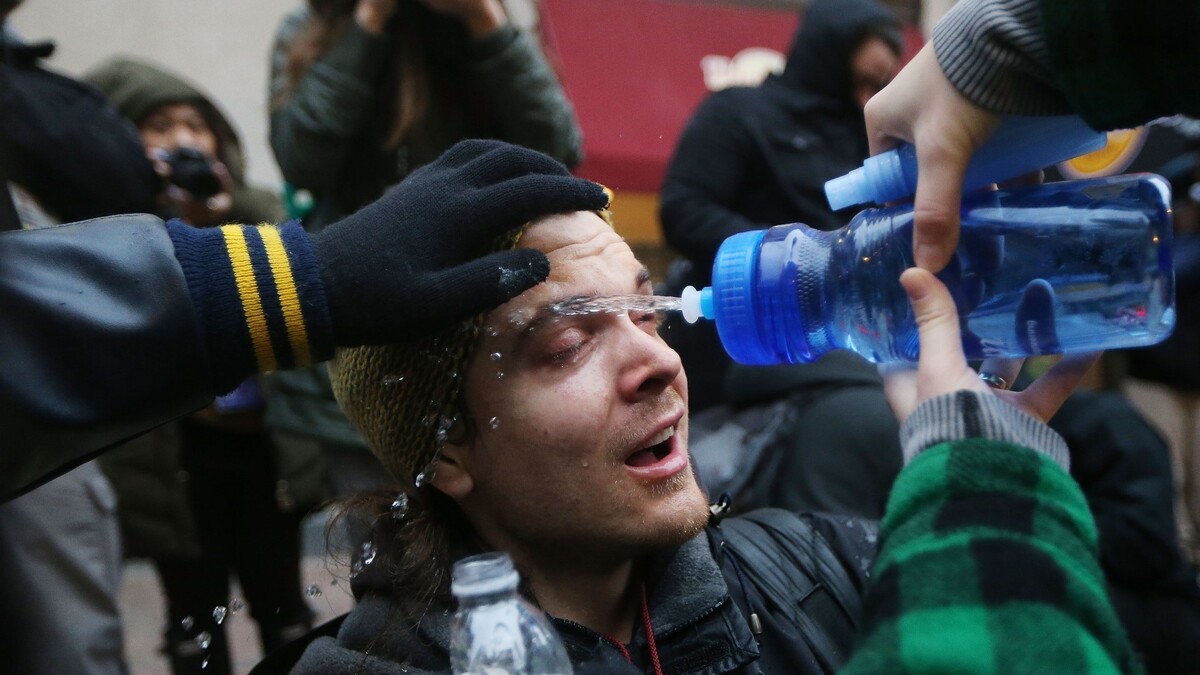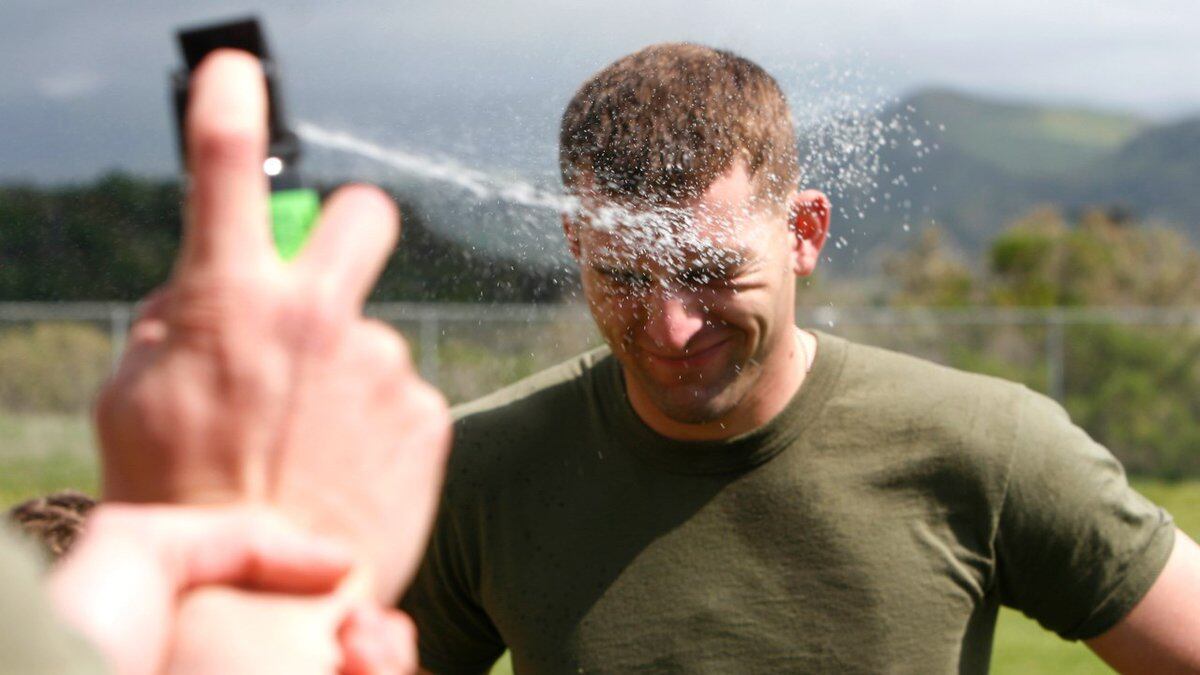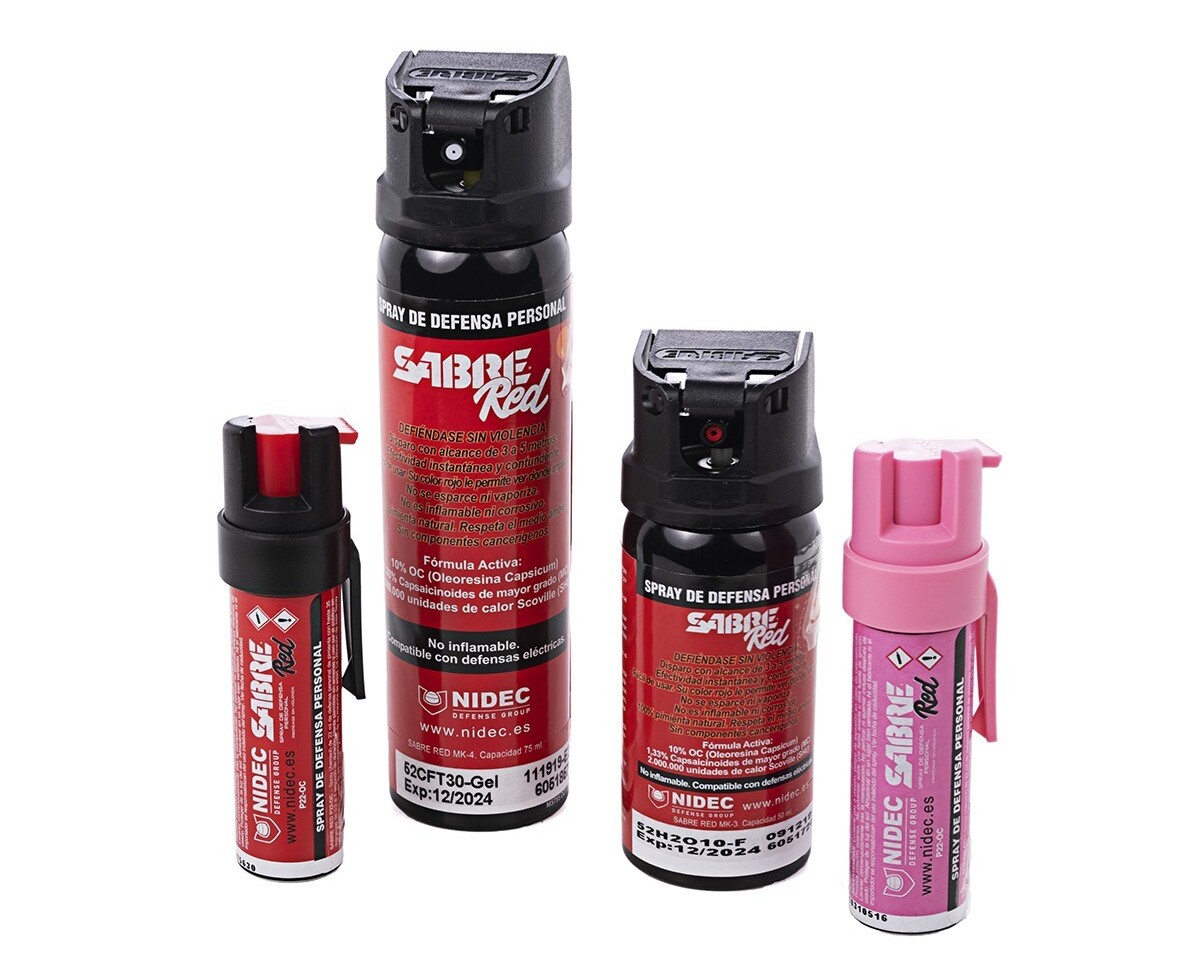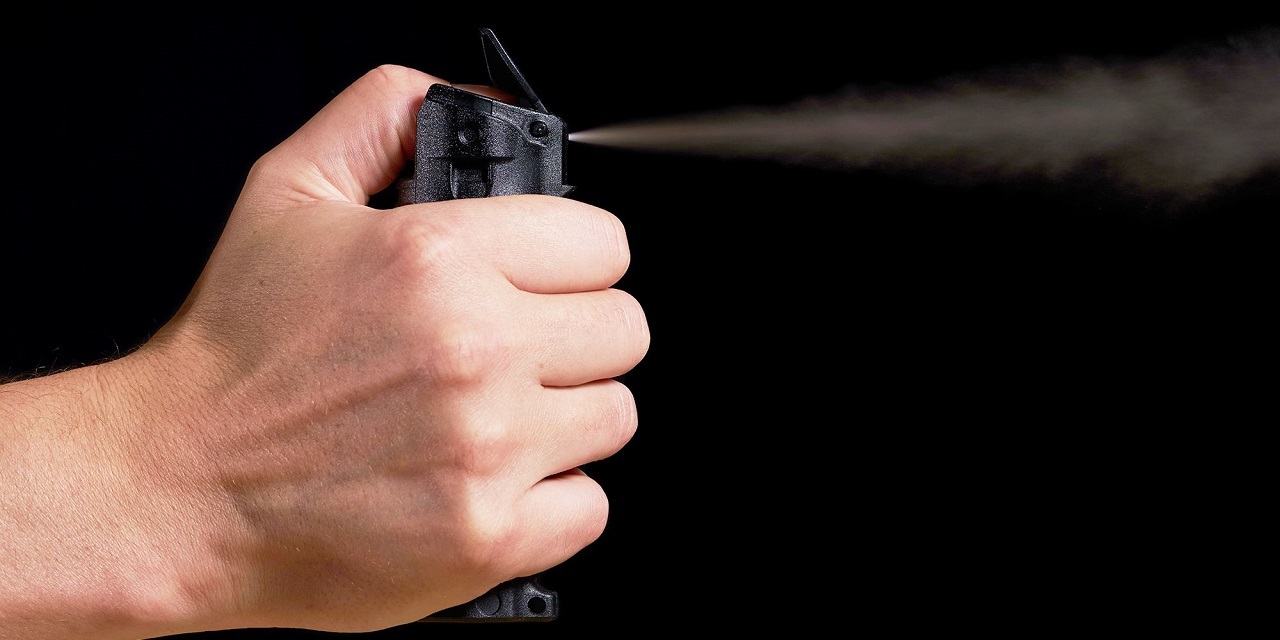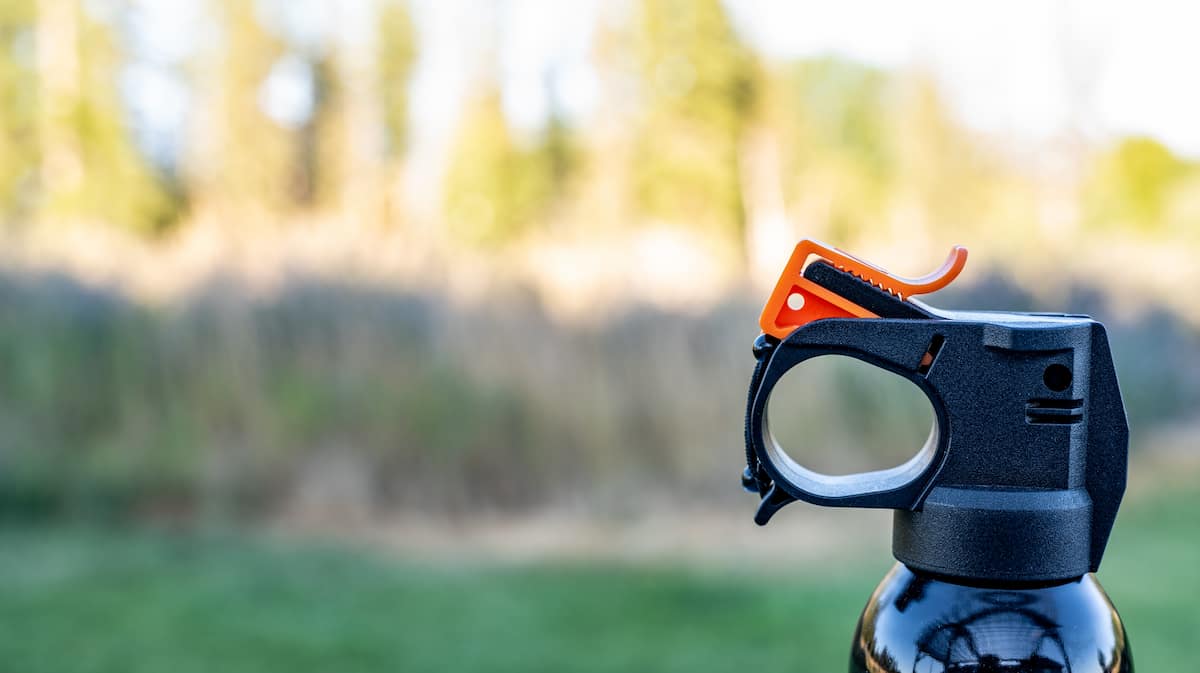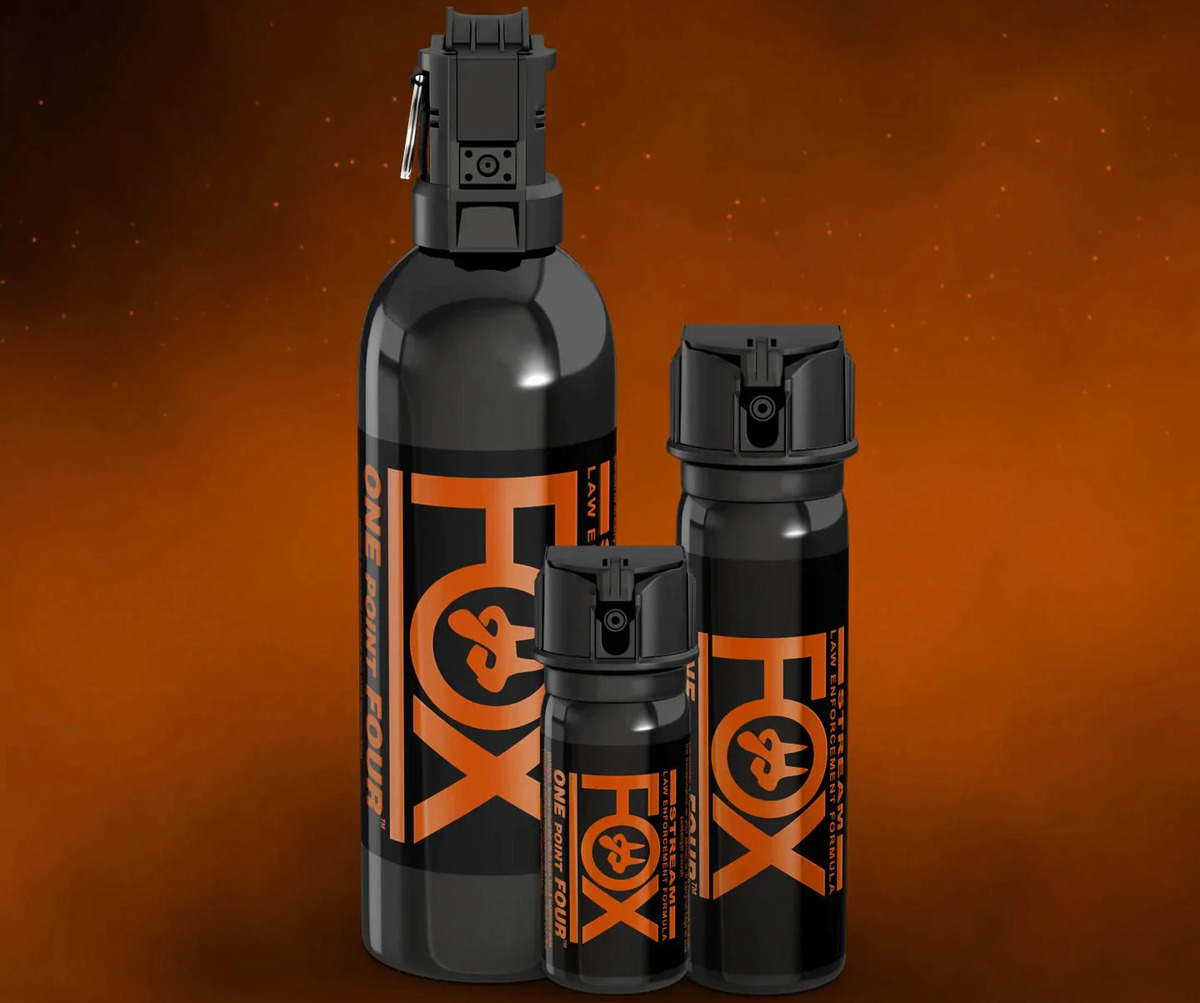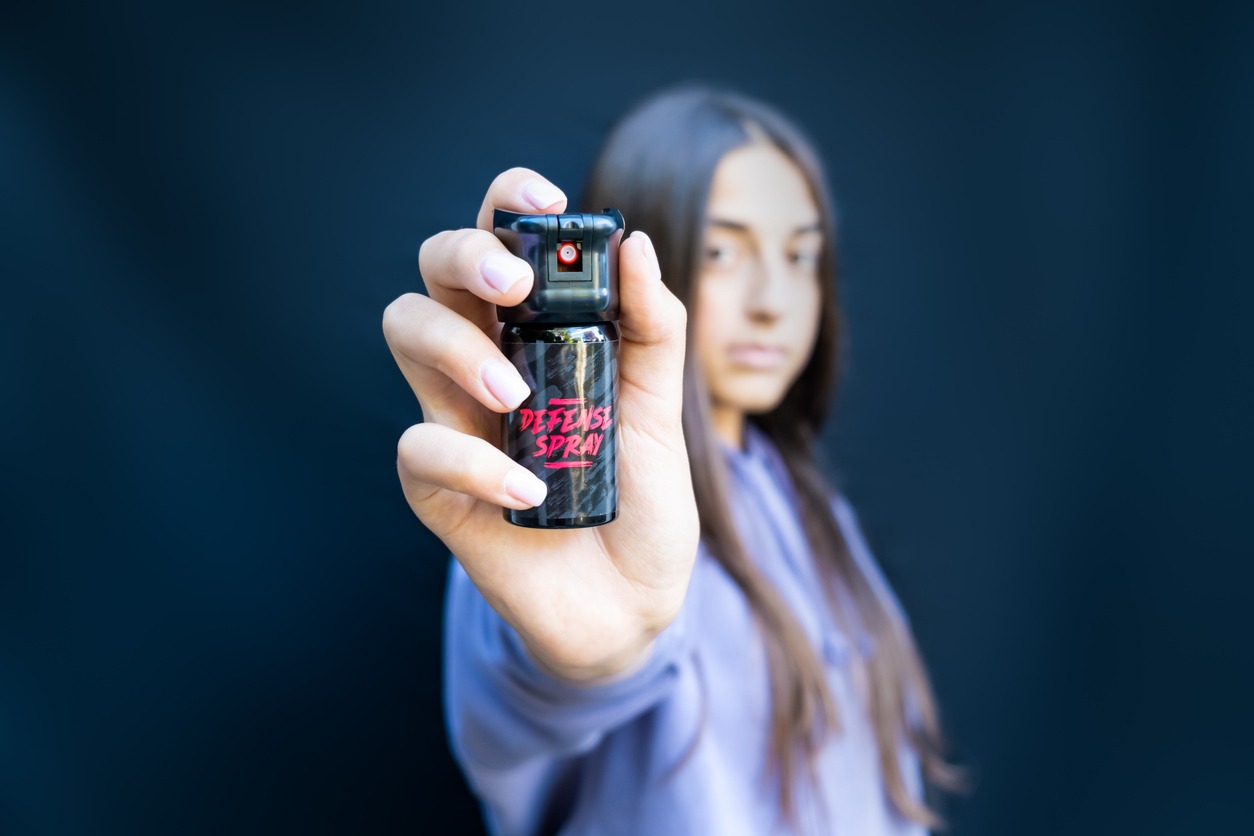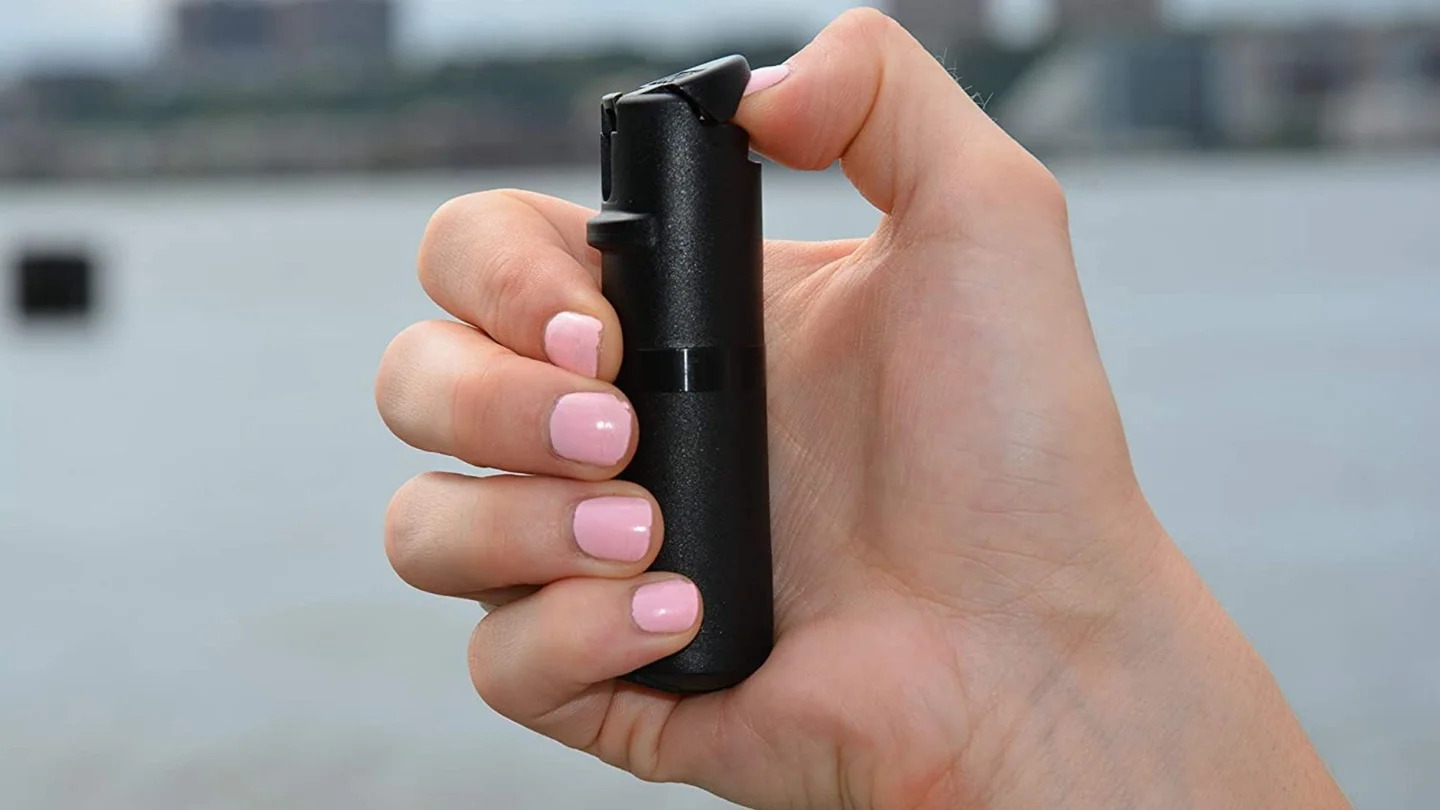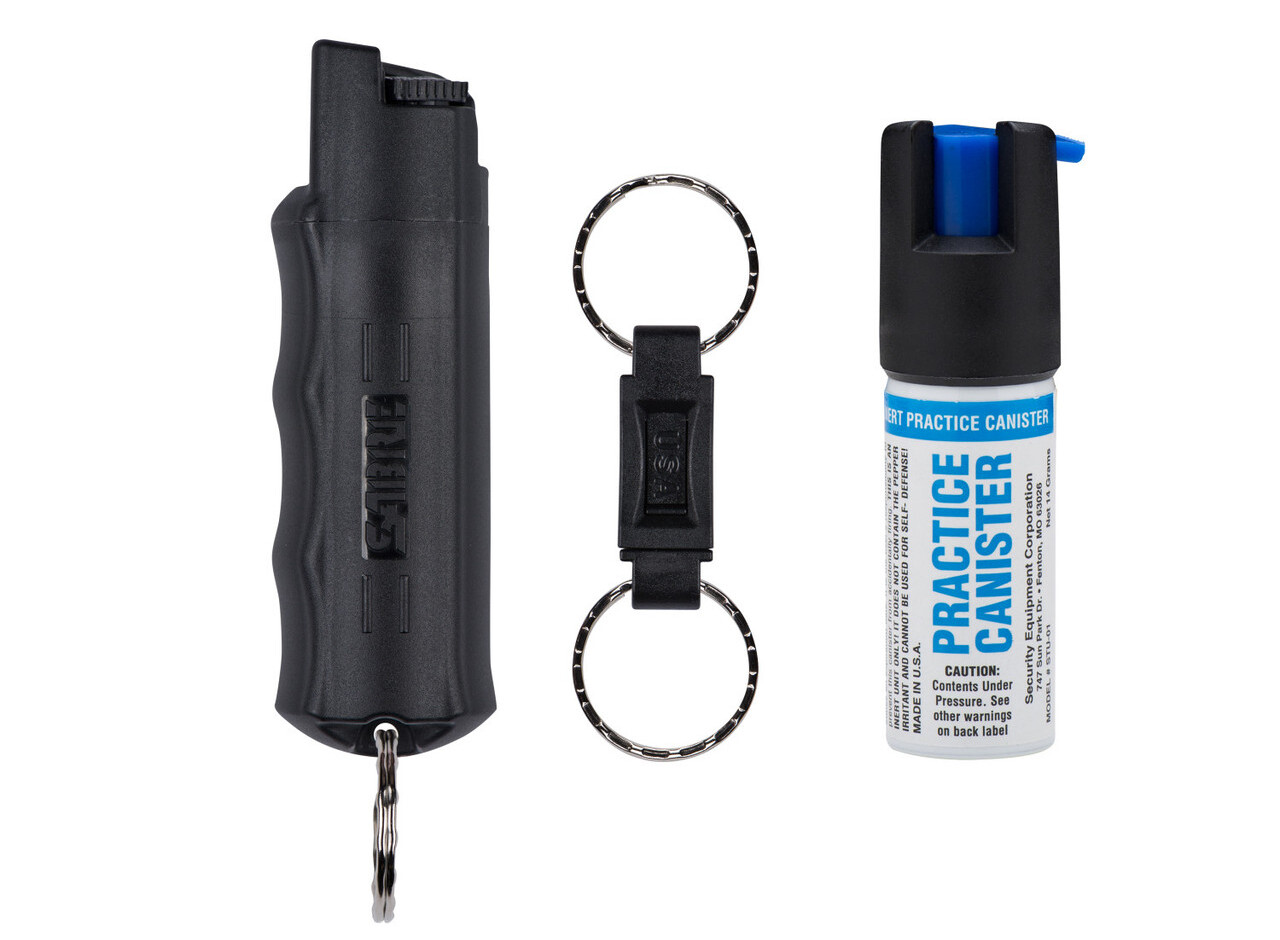Home>Home Security and Surveillance>Why Was Pepper Spray Invented


Home Security and Surveillance
Why Was Pepper Spray Invented
Modified: March 6, 2024
Discover the origins of pepper spray and its significance in home security and surveillance. Learn why this powerful defense tool was invented and how it enhances your protection.
(Many of the links in this article redirect to a specific reviewed product. Your purchase of these products through affiliate links helps to generate commission for Storables.com, at no extra cost. Learn more)
Introduction
Welcome to the world of home security and surveillance! In an age where safety is a top priority, it’s crucial to have effective measures in place to protect our homes and loved ones. Home security systems and surveillance play a vital role in ensuring peace of mind and deterring potential threats.
When it comes to home security, one tool that has gained significant popularity is pepper spray. Invented as a self-defense weapon, pepper spray has become a go-to option for individuals seeking a non-lethal means of protection.
In this article, we will delve into the fascinating history, development, composition, and uses of pepper spray. We’ll explore how this powerful tool works, its effectiveness, controversies surrounding its use, and the legal issues and regulations associated with it.
So, grab a cup of coffee and get ready to dive into the world of home security and surveillance with a focus on the invention and versatility of pepper spray!
Key Takeaways:
- Pepper spray was invented as a non-lethal self-defense tool, derived from ancient civilizations’ use of chili peppers. It provides immediate and versatile protection, but responsible usage and legal compliance are crucial.
- Pepper spray’s effectiveness lies in its ability to incapacitate threats quickly and safely. However, controversies and legal regulations highlight the importance of informed and ethical usage for personal safety.
Read more: What Is Pepper Spray
History of Pepper Spray
The use of peppers and their extracts for self-defense dates back centuries. Ancient civilizations, such as the Aztecs and Mayans, discovered the power of chili peppers and utilized them as a means of protection. They would crush and mix the fiery peppers with water to create a primitive form of pepper spray.
However, the modern formulation of pepper spray can be traced back to the 1960s. The concept of using capsaicin, the active component in chili peppers responsible for their heat, as a weapon was developed by the FBI as a non-lethal alternative to firearms. The intention was to incapacitate assailants temporarily without causing any lasting harm.
In 1973, the first commercial pepper spray product was introduced by a company called Chemical Mace. It contained a 10% concentration of oleoresin capsicum (OC), the oil extracted from chili peppers. This invention revolutionized the self-defense industry and paved the way for the widespread use of pepper spray.
Over the years, advancements in technology and research have led to the development of more effective and potent formulations of pepper spray. Today, pepper spray is widely available for personal use and is a popular choice among individuals looking for a reliable means of self-defense.
It is important to note that while pepper spray has gained popularity in recent decades, its use is not limited to personal protection. Law enforcement agencies around the world have also recognized its effectiveness and have incorporated it into their arsenal of non-lethal weapons.
The history of pepper spray is a testament to our constant pursuit of finding safer alternatives to traditional weapons. Pepper spray provides both law enforcement officers and individuals with a means of self-defense that is effective, non-lethal, and easy to use.
Development of Pepper Spray
The development of pepper spray involved extensive research and experimentation to create a safe and effective means of self-defense. Scientists and law enforcement agencies worked together to refine the formula and delivery systems to meet the needs of both professionals and individuals.
In its early stages, pepper spray was primarily used by the military and law enforcement as a crowd control tool. It was designed to disperse large groups of people without causing severe harm. The goal was to incapacitate individuals temporarily by causing intense irritation and sensory overload.
One of the key challenges in developing pepper spray was creating a formulation that would effectively deliver capsaicin, the active ingredient in chili peppers, in a concentrated and controlled manner. The goal was to maximize its impact on the target while minimizing collateral damage.
Initially, pepper spray was delivered using manual pump sprayers, similar to those used for spraying gardening pesticides. However, the range and efficacy of these early devices were limited. In response, researchers worked on developing aerosol canisters that could disperse the pepper spray over a greater distance.
As technology advanced, canisters equipped with a range of delivery systems, including sprays, foam, and gel, were introduced. Each type of delivery system had its advantages and disadvantages, depending on the specific use case.
The development of pepper spray also involved addressing safety concerns. While it was intended to be non-lethal, there was a risk of causing serious harm or even death, particularly in individuals with underlying health conditions or allergies. To mitigate these risks, manufacturers began incorporating dye markers into the formula, enabling law enforcement to identify and apprehend suspects even after the immediate effects of the spray subsided.
Continuous research and development have led to the introduction of new variants of pepper spray. For example, there are now blends specifically designed for use against animals, such as bear spray, which have a higher concentration of capsaicin.
Overall, the development of pepper spray involved a commitment to improving efficacy, range, and safety. Today, pepper spray is available in various forms, allowing individuals to choose the option that best suits their needs for self-defense.
Composition of Pepper Spray
Pepper spray is a powerful self-defense tool that derives its potency from the active ingredient known as oleoresin capsicum (OC). OC is an oil extracted from chili peppers, specifically the fruits of the Capsicum genus.
The composition of pepper spray typically includes a combination of OC, a propellant, and other inactive ingredients. The OC concentration can vary but is typically between 5% and 15% in commercial formulations. Higher concentrations are generally more potent and have a stronger effect on the target.
The propellant used in pepper spray is usually a combination of liquified gases, such as nitrogen or butane. These gases allow the spray to be emitted from the canister in a controlled and forceful manner, reaching the desired target effectively.
In addition to OC and the propellant, pepper spray may also contain other inactive ingredients. These can include water to dilute the formula, as well as thickening agents and stabilizers to ensure the spray remains usable over time.
Some pepper spray products also incorporate UV dyes or marking agents. These additives serve a dual purpose. First, they help law enforcement identify individuals who have been sprayed, making it easier to apprehend suspects. Second, the dye can act as a deterrent, as assailants may be unwilling to engage in criminal activity if they know they will be easily identifiable.
It is important to note that pepper spray is available in different formulations, including sprays, foam, and gel. The composition may vary slightly depending on the specific delivery system, but the primary active ingredient remains oleoresin capsicum.
Manufacturers prioritize the safety of pepper spray users by adhering to strict guidelines and regulations for production and packaging. This ensures that the formulation is consistent, effective, and safe for both individuals and law enforcement officers.
Understanding the composition of pepper spray is essential for responsible usage. It enables users to make informed decisions about which product is the most suitable for their needs and ensures they are aware of any potential allergic reactions or health considerations.
How Does Pepper Spray Work?
Pepper spray is a highly effective self-defense tool that works by utilizing the active ingredient oleoresin capsicum (OC) to incapacitate and deter potential threats. When sprayed onto an individual, pepper spray targets the sensory systems, causing temporary but severe discomfort and impairment.
Upon contact with the eyes, nose, or mouth, OC in pepper spray triggers an intense inflammatory response. The capsaicin in OC binds to the pain receptors in the body, specifically the TRPV1 receptors, leading to a series of physiological reactions.
The effects of pepper spray can be described as a combination of intense burning, pain, and irritation of the eyes, nose, throat, and skin. Individuals exposed to pepper spray may experience immediate and involuntary closing of the eyes, coughing, choking, difficulty breathing, and a sensation of intense heat.
The inflammatory response caused by pepper spray also leads to temporary vision impairment. The capsaicin acts as a powerful irritant to the eyes, causing severe tearing, redness, and swelling of the eye tissues. This effectively impairs the vision of the target, making it difficult for them to continue any hostile actions.
In addition to the immediate effects, pepper spray also induces a strong physiological response. The body’s natural instinct is to protect itself, so when exposed to pepper spray, the respiratory system may produce excessive mucus and coughing as a reflex to remove the irritant. This can further impair the ability of the target to breathe properly or continue any aggressive behavior.
The effects of pepper spray are temporary and typically last between 30 minutes to an hour, depending on the concentration of the spray, the amount applied, and individual tolerance. However, it is important to note that even after the initial effects subside, individuals may experience residual discomfort and irritation for several hours.
It is crucial to use pepper spray responsibly and to be aware of its potential effects on bystanders and the environment. Wind direction and proximity to others should be taken into consideration when deploying pepper spray to minimize collateral damage.
Pepper spray is a highly effective self-defense tool due to its ability to temporarily incapacitate and deter attackers. Its powerful inflammatory effects on the sensory systems make it an ideal non-lethal option for personal protection.
Pepper spray was invented as a non-lethal self-defense tool. It is used to temporarily incapacitate an attacker by causing irritation to the eyes, skin, and respiratory system.
Read more: How To Store Pepper Spray
Uses of Pepper Spray
Pepper spray is a versatile self-defense tool that serves a variety of purposes. Its primary use is for personal protection, providing individuals with a non-lethal means of defending themselves in threatening situations. However, the uses of pepper spray extend beyond personal safety.
1. Self-Defense: Pepper spray is widely used as a self-defense tool by individuals of all backgrounds, including joggers, students, and those who work or travel alone. It provides a way to incapacitate attackers temporarily, allowing potential victims to escape or seek help.
2. Law Enforcement: Pepper spray is a valuable tool in the hands of law enforcement officers. It can be used to subdue aggressive individuals without causing lasting harm, reducing the risk of injury to both the officer and the suspect. It is particularly effective in crowd control scenarios.
3. Animal Deterrent: Pepper spray is also utilized as a means of deterring aggressive animals, such as dogs or bears. Animal-specific pepper sprays are available with higher capsaicin concentrations, providing an effective deterrent when encountering aggressive or dangerous animals in outdoor settings.
4. Security Personnel: Security guards and private security personnel often carry pepper spray as part of their security arsenal. It acts as a less-lethal option to protect themselves and their clients in situations where physical force may be necessary but lethal force is not warranted.
5. Outdoor Enthusiasts: People who enjoy outdoor activities like hiking, camping, or trail running may carry pepper spray for personal safety. It serves as a means of defense against both human and animal threats while exploring remote or unfamiliar areas.
6. Personal Safety for Senior Citizens: Pepper spray provides an added layer of security for senior citizens who may feel vulnerable to potential attacks. Its ease of use and effectiveness make it a popular choice for elderly individuals seeking an additional means of protection.
It is important to remember that while pepper spray is an effective self-defense tool, it should be used responsibly and in accordance with local laws and regulations. Understanding the intended purpose and limitations of pepper spray is crucial in order to maximize its benefits and minimize any potential risks or unintended consequences.
Whether for personal safety, law enforcement, or deterring aggressive animals, pepper spray offers a versatile and effective means of protection in various situations.
Effectiveness of Pepper Spray
Pepper spray has proven to be a highly effective tool for self-defense and incapacitating threats. Its wide usage by law enforcement agencies, military organizations, and individuals attests to its reliability and effectiveness. Here are some of the key factors that contribute to the effectiveness of pepper spray:
1. Immediate Impact: Pepper spray acts quickly upon contact with the target’s eyes, nose, or mouth. The capsaicin in pepper spray triggers an intense inflammatory response, causing temporary but significant discomfort and impairment. This immediate impact can incapacitate attackers and provide victims with an opportunity to escape or seek help.
2. Non-Lethal: One of the key advantages of pepper spray is that it is a non-lethal option for self-defense. Unlike firearms or other lethal weapons, pepper spray is designed to disable a threat without causing permanent harm or risk of fatality. It provides individuals with a means of protecting themselves without the potential legal or moral consequences associated with lethal force.
3. Versatility: Pepper spray is effective against a wide range of potential threats, including humans and aggressive animals. It affects the sensory systems, causing intense irritation and impairment. This makes it an effective deterrent against potential attackers and wild animals, providing individuals with a versatile option for personal safety.
4. Psychological Impact: The mere presence of pepper spray can act as a deterrent, dissuading potential attackers from targeting individuals who are visibly prepared to defend themselves. Criminals are often aware of the effects of pepper spray and are reluctant to engage with someone who is armed with it, strengthening its effectiveness as a self-defense tool.
5. Minimal Training Required: Pepper spray is relatively easy to use, requiring minimal training or physical strength to be effective. The simplicity of its operation and the ability to quickly deploy it in high-stress situations make it a practical choice for individuals seeking a non-lethal means of protection.
6. Accessibility and Portability: Pepper spray is widely available and easily accessible for purchase in many jurisdictions. It is also compact and lightweight, making it convenient to carry in a pocket, purse, or keychain. This accessibility and portability ensure that individuals have a readily available means of self-defense when needed.
While pepper spray is highly effective, it is essential to familiarize oneself with local laws and regulations regarding its possession and use. Responsible and ethical usage, along with awareness of potential limitations, can maximize the effectiveness and benefits of pepper spray for personal protection.
Overall, the effectiveness of pepper spray lies in its ability to incapacitate threats quickly and safely, offering individuals a practical means of self-defense in a wide range of situations.
Controversies Surrounding Pepper Spray
While pepper spray is widely recognized as an effective non-lethal self-defense tool, it is not without controversy. The use and effects of pepper spray have sparked debates and raised concerns over its safety, ethics, and potential misuse. Here are some of the key controversies surrounding pepper spray:
1. Health Risks: Pepper spray can cause significant discomfort and temporary impairment. However, there are potential risks, especially for individuals with underlying health conditions, respiratory issues, or allergies. The effects of pepper spray can be more severe for vulnerable populations, raising concerns about its potential for harm.
2. Excessive Use of Force: Some critics argue that pepper spray is prone to misuse and can be employed as a means of excessive force by law enforcement officers. Instances of misuse, where individuals are exposed to pepper spray despite posing no significant threat, have fueled concerns about the potential for abuse and the need for proper training and guidelines for its use.
3. Unintended Targets and Collateral Damage: Pepper spray, especially when used in crowded or enclosed spaces, can affect bystanders and unintended targets. Wind direction or improper usage can result in exposure to innocent individuals, causing discomfort or panic. This raises questions about the potential for unintended harm and the need for caution when deploying pepper spray.
4. Ethical Considerations: Some people question the ethics of using pepper spray as a means of self-defense. Critics argue that it may escalate conflict or cause unnecessary harm, while others argue that it is a necessary tool for personal safety. The ethical debate centers around the appropriate use of force and the responsibility of individuals when employing self-defense measures.
5. Alternatives to Pepper Spray: Critics argue that there are alternative self-defense options that do not rely on the use of chemical irritants. Non-lethal devices like stun guns, personal alarms, or self-defense training programs are suggested as potential alternatives that may allow individuals to protect themselves without resorting to the use of pepper spray.
6. Regulation and Legal Concerns: The regulation and control of pepper spray vary from jurisdiction to jurisdiction, leading to debates about its availability and appropriate use. Some advocate for stricter regulations to prevent misuse, while others argue for continuing easy accessibility for personal safety purposes.
It is important to acknowledge and address these controversies to mitigate potential risks associated with the use of pepper spray. Stricter regulations, comprehensive training programs, and ongoing research can help strike a balance between personal safety and responsible use of this self-defense tool.
Ultimately, the controversies surrounding pepper spray underscore the need for education, responsible usage, and ongoing discussions to ensure its effective and ethical use as a self-defense tool.
Legal Issues and Regulations
As with any self-defense tool, the use and possession of pepper spray are subject to legal regulations and restrictions. The specific laws surrounding pepper spray can vary between countries, states, and even municipalities. It is important to familiarize yourself with the legal issues and regulations pertaining to pepper spray in your particular jurisdiction. Here are some key aspects to consider:
1. Legal Age Restrictions: Many jurisdictions have minimum age requirements for the purchase and possession of pepper spray. The age limit can vary, but it is commonly set at 18 years or older. It is crucial to ensure compliance with age restrictions to avoid legal consequences.
2. Formulations and Concentrations: Some regions may have restrictions on the types of pepper spray formulations or concentrations that are permissible for civilian use. Government regulations may dictate the maximum concentration of the active ingredient, such as oleoresin capsicum (OC), that is allowed in commercially available products.
3. Restricted Areas: Certain locations, such as schools, government buildings, airports, and public transportation, may prohibit the possession or use of pepper spray. It is important to be aware of these restricted areas to avoid legal issues and penalties.
4. Labeling and Packaging Requirements: Legal regulations often specify the labeling and packaging requirements for pepper spray products. This includes the need for clear instructions, safety warnings, and proper labeling of the active ingredient and concentration. Adhering to these requirements ensures compliance with the law and promotes responsible usage.
5. International Travel Restrictions: If you plan to travel internationally, it’s important to research and understand the specific laws and regulations regarding pepper spray in your destination country. Customs and border control agencies may have strict restrictions or even prohibit the entry of pepper spray into their jurisdiction.
6. Misuse and Criminal Intent: It is important to note that the misuse of pepper spray or using it with criminal intent, such as an unprovoked attack or inflicting harm on others, is illegal and can result in severe legal consequences. Pepper spray should always be used responsibly and in accordance with the law.
When purchasing pepper spray, it is advisable to buy from reputable sources and ensure that the product meets all legal requirements and safety standards. Additionally, it is recommended to familiarize yourself with proper usage techniques and attend self-defense classes to ensure you are well-prepared and informed.
Being aware and compliant with the legal issues and regulations surrounding pepper spray is essential for responsible ownership and usage. Staying informed about local laws and regulations ensures that you can confidently and legally utilize pepper spray as an effective self-defense tool.
Read more: Which Is Better: Pepper Spray Or Pepper Gel
Conclusion
In a world where personal safety is paramount, having effective home security and surveillance measures in place is crucial. Pepper spray has emerged as a popular and reliable non-lethal self-defense tool that provides individuals with a means to protect themselves and deter potential threats.
Throughout this article, we have explored the rich history, development, composition, and uses of pepper spray. We discovered that pepper spray’s roots can be traced back to ancient civilizations, and it has since evolved into a potent weapon for personal protection.
The composition of pepper spray, with its active ingredient oleoresin capsicum (OC), provides immediate and intense effects that incapacitate assailants temporarily. It is this unique quality that contributes to the effectiveness of pepper spray in self-defense scenarios.
We also discussed the various uses of pepper spray, including its application in personal self-defense, law enforcement, deterring animal attacks, and enhancing outdoor safety. Pepper spray offers versatility and accessibility, making it a popular choice for individuals seeking an effective means of protection.
However, it is essential to acknowledge and address the controversies surrounding pepper spray, including health risks, potential for misuse, unintended targets, and ethical considerations. Responsible usage and adherence to legal regulations are imperative to ensure the safe and ethical deployment of pepper spray.
By understanding the legal issues and regulations governing pepper spray, individuals can make informed decisions about its purchase, possession, and use. It is crucial to respect the laws and restrictions in your jurisdiction, as well as to prioritize training and education on proper usage techniques.
In conclusion, pepper spray has become a valuable tool in the realm of personal safety and self-defense. Its effectiveness, non-lethal nature, and accessibility make it an attractive choice for individuals seeking to enhance their personal security.
However, we must always emphasize the importance of responsible usage and respect for legal regulations. Pepper spray should be seen as a supplement to a comprehensive home security plan, which may include other measures such as alarm systems, surveillance cameras, and mindful awareness of one’s surroundings.
With proper knowledge, training, and adherence to legal and ethical considerations, pepper spray can be a valuable asset in safeguarding oneself and loved ones. Remember, the goal is not only to protect but also to promote a society where safety and security are priorities for all.
Frequently Asked Questions about Why Was Pepper Spray Invented
Was this page helpful?
At Storables.com, we guarantee accurate and reliable information. Our content, validated by Expert Board Contributors, is crafted following stringent Editorial Policies. We're committed to providing you with well-researched, expert-backed insights for all your informational needs.
